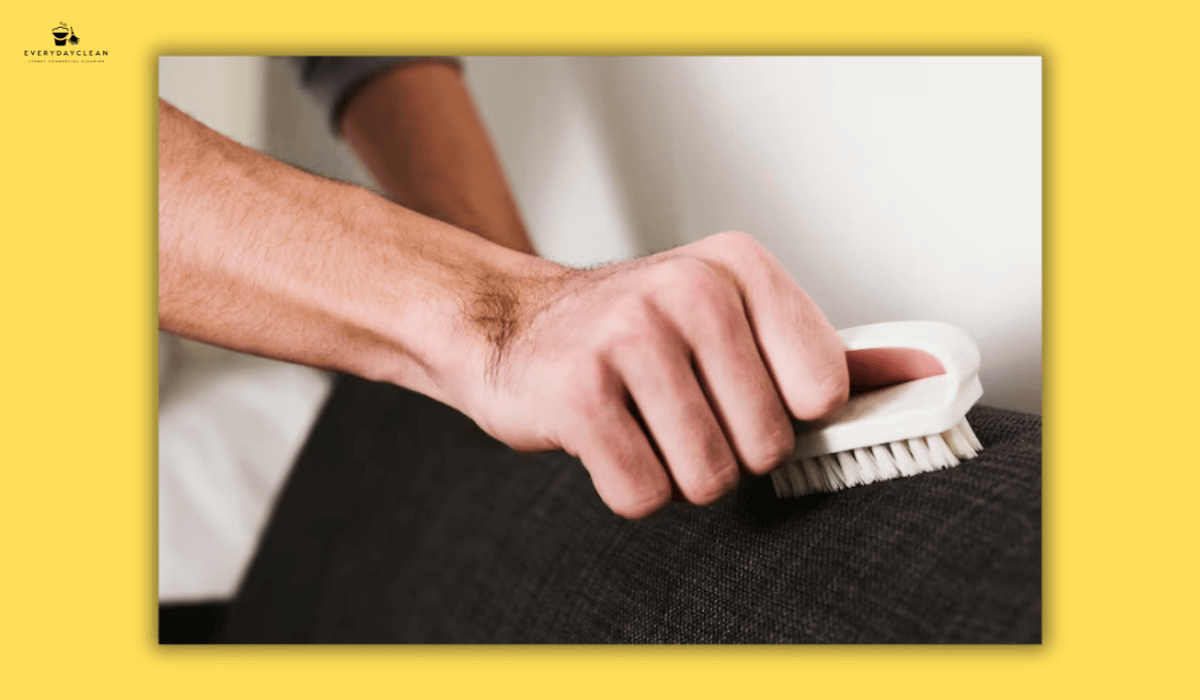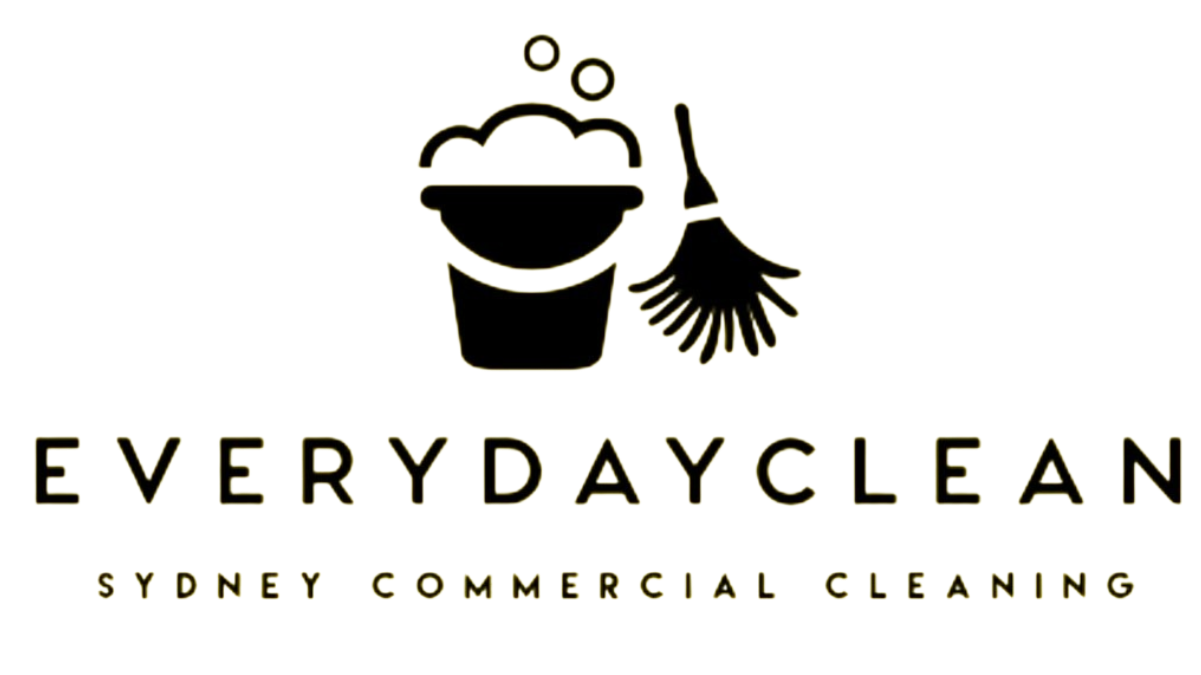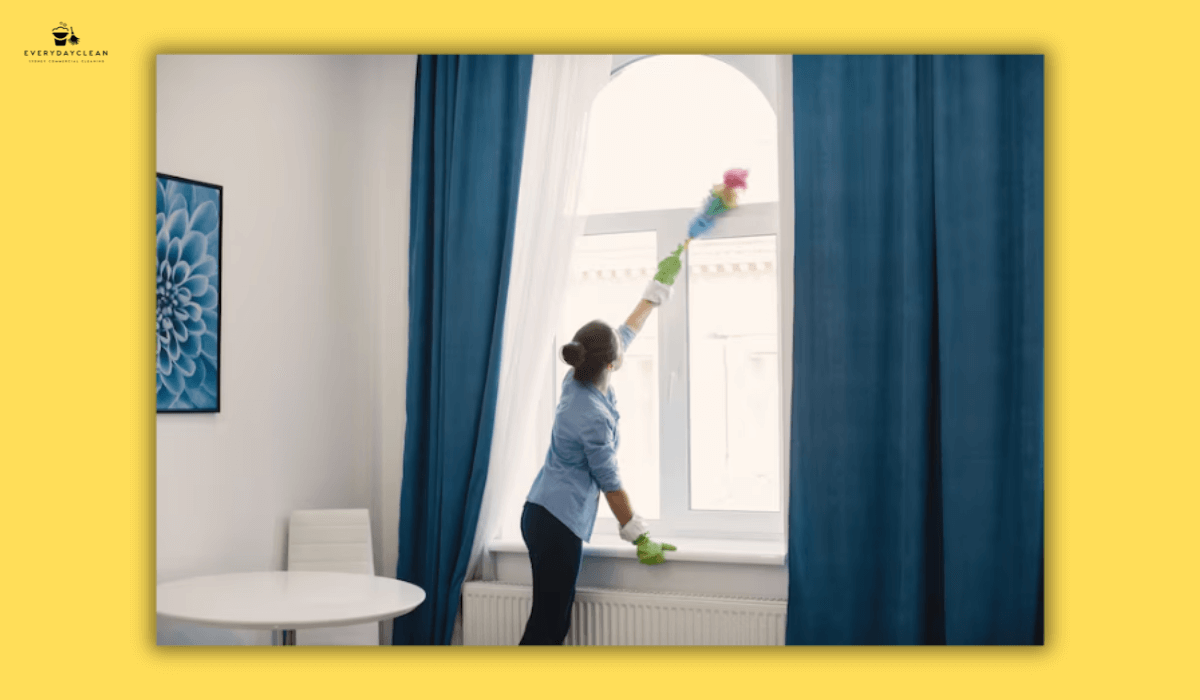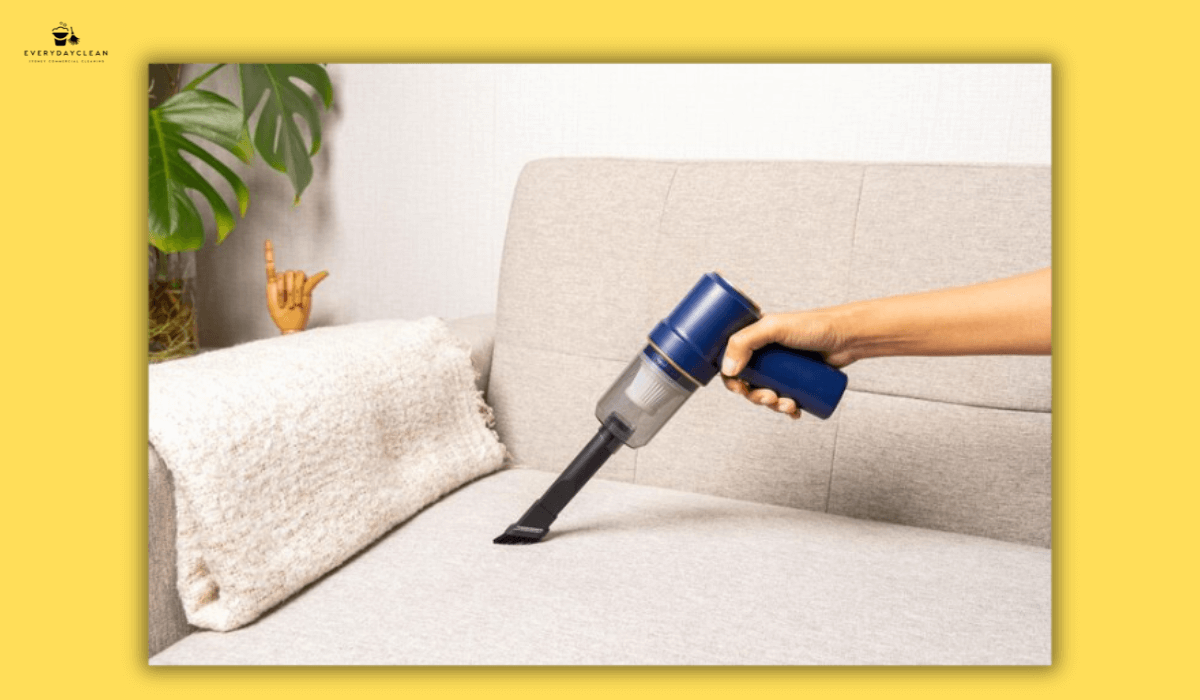10 Best Brushes for Cleaning Upholstery for Every Fabric
The best brush for cleaning upholstery depends on both the fabric type and the cleaning task. Drill brushes provide deep agitation for heavy soil, while nylon or medium-stiff bristle brushes suit general spot cleaning and everyday fabric couches. For delicate materials, soft bristle or microfiber-safe brushes prevent fibre damage, and for leather upholstery, a horsehair brush offers controlled cleaning without scratching the surface. The ideal brush lifts embedded dirt, loosens debris and supports the cleaning solution’s ability to break down stains, ensuring the fabric is cleaned effectively while maintaining its texture and structure. For those comparing DIY tools with professional options, reviewing established providers such as Everyday Clean can offer helpful benchmarks.
Top 10 best brushes for cleaning upholstery
1. Soft-bristle upholstery brush for delicate fabrics
A soft-bristle brush is the safest choice for cleaning materials that flatten or fray easily. Fabrics like velvet, linen blends, microfiber and vintage upholstery respond well to flexible fibres that glide across the surface rather than cutting into the weave. The brush lifts loose dirt, distributes foam or low-moisture cleaners and prevents abrasion. This protects fragile fibres and allows stains to be treated without damaging the fabric structure. Because these brushes avoid scratching, they are ideal for regular maintenance and for restoring the texture of sensitive upholstery after spot cleaning. For homes with high-value or older furniture, this brush delivers reliable, gentle agitation.
2. Medium-stiff nylon brush for standard fabric couches
A medium-stiff nylon brush provides the most balanced performance for everyday upholstery. Nylon maintains its shape during scrubbing and offers enough rigidity to release dirt trapped in the weave, especially on polyester, microfiber and durable cotton blends. This brush works well with detergent-based or enzyme cleaners because it pushes product deeper into the fabric without being too harsh. It is ideal for removing food crumbs, body oils, drink spills and general soil that accumulates on household couches. For routine cleaning cycles, nylon bristles offer safe agitation and consistent results, making it a dependable tool for most modern sofas.
3. Boar hair brush for natural fibre upholstery
Boar hair brushes excel on natural upholstery because their bristles mimic the softness of human hair. Wool, textured cotton, canvas and linen all benefit from a brush that carries cleaning solution evenly while polishing the fibres. The natural bristles reduce static and gently lift dust that sits between threads. This makes boar hair ideal for refreshing fabrics that rely on texture and breathability rather than synthetic elasticity. The brush also helps maintain structural integrity in older furnishings. For homeowners who prefer natural cleaning tools, this brush supports deeper cleaning with minimal stress on the fabric.

4. Stiff-bristle detailing brush for heavy soil
A stiff-bristle brush is intended for durable upholstery that can tolerate aggressive cleaning. Outdoor cushions, commercial benches and older heavy-fabric sofas often collect deep-set grime that softer brushes cannot remove. The stiff bristles transfer more mechanical force into the fibres, helping loosen compacted soil and oils. However, this tool must only be used on fabrics designed for such agitation; on delicate materials, it can cause pilling or fibre damage. In environments like gyms, cafés or rental properties where upholstery faces heavy usage, a stiff brush helps restore the material’s appearance quickly when paired with a suitable cleaning solution.
5. Microfiber restoration brush for lifting the nap
Microfiber upholstery holds dirt differently due to its dense, fine fibres. A microfiber-specific brush is designed to restore the nap and achieve an even texture after cleaning. These brushes lift flattened fibres, remove lint and distribute alcohol-based or foam cleaners effectively. Using the wrong brush on microfiber can create streaks, shiny patches or inconsistent texture. A dedicated microfiber brush corrects this by brushing the fibres in a single direction, improving both appearance and softness. This tool is essential for maintaining microfiber couches that see frequent use and need regular grooming to retain their uniform finish.
6. Upholstery drill brush for deep, efficient cleaning
Drill brush attachments provide machine-assisted agitation, making them valuable for heavily soiled upholstery. When set to low rotation speed, these brushes lift dirt faster than manual scrubbing and can cover large seating areas quickly. They are ideal for car seats, large sectional sofas, commercial seating or deep-clean cycles in high-traffic environments. The key is control: excessive pressure or speed can damage fabric. With proper technique, a drill brush accelerates the cleaning process and enhances stain removal. It is best suited for durable fabrics and for cleaning cases where manual tools prove insufficient.
7. Velvet grooming brush for maintaining pile direction
Velvet upholstery requires a brush that moves the pile uniformly rather than scrubbing against it. A velvet grooming brush features fine, densely packed bristles that gently lift the fibres to restore sheen and smoothness. After applying a foam cleaner or performing spot treatment, the brush realigns the nap, preventing streaks and crushed areas. Because velvet reacts noticeably to pressure, using a dedicated brush is essential to maintain its soft, luxurious appearance. Regular grooming with this tool prolongs the fabric’s life and keeps it looking refined even between cleans.
8. Horsehair brush for precision detailing
A horsehair brush is used for precision cleaning on upholstery with seams, folds, piping or sensitive decorative details. The soft yet durable fibres offer controlled agitation suited to car interiors, mixed-material chairs and couches with leather trim. Horsehair excels at lifting dry soil without scratching or causing texture imbalance. Paired with foam cleaners or neutral-pH products, it reaches the crevices where dirt accumulates. For intricate or high-end upholstery, this brush provides a safe alternative to nylon or stiff bristles, ensuring delicate areas receive targeted, gentle cleaning.
9. Eco-friendly natural-fibre brush for sustainable cleaning routines
Natural-fibre brushes made from sisal, tampico or coconut husk offer moderate stiffness and support eco-friendly cleaning processes. They work well on synthetic blends and sturdy cotton fabrics, providing enough agitation to lift soil while avoiding synthetic materials. These brushes complement plant-based detergents and low-tox cleaning routines. They also generate less static, making them suitable for upholstery that attracts lint. For households focused on sustainability, this brush provides a durable, biodegradable tool that maintains cleaning performance without creating plastic waste.
10. Compact spot-cleaning brush for targeted stain removal
A compact spot-cleaning brush is essential for treating small spills, pet accidents and fresh stains before they spread into deeper layers of the upholstery. Its focused bristle design allows precise agitation that supports enzyme cleaners, hydrogen peroxide stain removers (on colour-safe fabrics) and foam products. Because spot cleaning requires controlled moisture levels, this tool helps prevent saturation and reduces the risk of water rings. It is especially valuable for busy households or commercial spaces where a quick response to stains extends the life of the furniture and reduces long-term wear. For higher-traffic environments or challenging stains, professional services such as
Upholstery Cleaning
may be worth considering.

How to choose the best brush for cleaning upholstery
Choosing the best brush begins with identifying the fabric type and matching it to the appropriate bristle category. Soft bristles suit delicate fibres, medium nylon suits everyday fabrics, and stiff bristles should only be used on durable upholstery. Brushes made from boar hair or horsehair support natural materials or intricate details, while drill brushes work for deep cleaning on heavily soiled surfaces. The correct pairing prevents damage and improves cleaning efficiency by ensuring that agitation complements the cleaning solution used. Understanding these relationships allows the brush to enhance—not hinder—the cleaning outcome.
How to use an upholstery brush safely (step-by-step)
Cleaning upholstery effectively depends on using the correct technique. Below is a clear, mandatory step-by-step method to ensure you follow your guidelines.
- Vacuum the upholstery thoroughly to remove loose dust and reduce the amount of soil pushed deeper during scrubbing.
- Apply a suitable cleaner according to fabric care instructions—neutral pH for synthetics, foam cleaners for velvet and enzyme cleaners for organic stains.
- Use light, controlled brushing motions that match fabric sensitivity: circular for durable textiles, directional for microfiber and velvet.
- Avoid oversaturation by limiting water volume and blotting frequently to prevent moisture from sinking into cushions.
- Brush again after cleaning to lift the nap, restore texture and distribute remaining moisture evenly.
- Allow proper drying time using airflow rather than heat to avoid shrinking or fibre distortion.
These steps ensure deep cleaning while preserving fabric structure.

FAQs about the best brush for cleaning upholstery
Before moving into individual questions, the following FAQ section covers real search behaviour from Google’s related and expanded queries. These questions reflect common uncertainties about brush stiffness, fabric safety, product comparisons and proper maintenance.
What bristle stiffness is safe for upholstery fabric?
Bristle stiffness determines how aggressively a brush interacts with upholstery fibres. Soft bristles are safe for velvet, microfiber, loosely woven linens and delicate vintage fabrics because they prevent abrasion and limit tension on the weave. Medium-stiff nylon bristles suit everyday materials like polyester blends, microfiber couches and cotton upholstery; they provide enough agitation to lift dirt without damaging fibres. Stiff bristles should only be used on durable textiles that can tolerate force, such as outdoor cushions, canvas or older heavy-fabric seating. Using the wrong stiffness can cause scratching, pilling or distortion. Matching bristle strength to fabric resilience ensures effective cleaning without long-term wear.
Boar hair vs nylon upholstery brush — which is better?
Boar hair and nylon serve different purposes and should not be viewed as competing tools. Boar hair offers gentle agitation that distributes cleaning solution evenly across natural fibres such as linen, wool and woven cotton. It reduces static and polishes fibres while preserving texture. Nylon is stronger and more resilient, making it ideal for synthetic upholstery, microfiber and high-use couches where dirt lodges deeper into the weave. Nylon withstands repeated scrubbing and maintains its shape better under pressure. The choice depends entirely on the fabric: natural fibres benefit from boar hair, while synthetic textiles respond best to nylon’s controlled stiffness.
What brush is best for cleaning velvet upholstery?
Velvet upholstery requires a brush that focuses on grooming rather than scrubbing. Velvet’s pile structure is easily disturbed, so a velvet-specific brush with fine, uniform bristles lifts and aligns the fibres without flattening them. After using a foam-based cleaner, the brush restores the direction of the nap, prevents streaks and enhances sheen. Hard or medium brushes should never touch velvet because they create shine marks or permanent pile distortion. Regular brushing helps maintain velvet’s smooth texture and luxurious appearance. When cared for with the right tool, velvet stays more uniform, visually appealing and resistant to premature wear.
What brush is safest for delicate vintage furniture?
Delicate vintage upholstery often contains weakened fibres, fragile weaves and sensitive dyes. A soft brush such as boar hair, horsehair or soft synthetic bristles offers the safest agitation. These materials lift dust and mild soil without applying excessive friction that could fray threads or loosen the weave. Foam cleaners pair best with soft brushes because they sit on the surface rather than soaking into the fabric. Stiff brushes should be avoided entirely. Using gentle tools preserves construction integrity and maintains original appearance—crucial for antique or heritage furniture where fabric cannot easily be replaced or restored.
Is a manual upholstery brush or a drill brush better?
The better tool depends on the soil level and fabric tolerance. Manual brushes allow controlled, gentle agitation suitable for delicate fabrics, routine cleaning and targeted spot treatment. They are the safer choice for most household upholstery. Drill brushes, however, offer deep mechanical agitation that speeds up cleaning on heavily soiled couches, car seats or commercial seating. When used at low speed, they lift embedded dirt efficiently. The risk is over-agitation, which can stretch or distort fibres if misused. Manual brushes win for precision and safety, while drill brushes excel in demanding cleaning scenarios requiring significant mechanical power.
How to clean an upholstery brush after use?
Cleaning an upholstery brush ensures consistent performance. Begin by rinsing the brush under warm water to remove detergent and loosened debris. Use mild dish soap to dissolve oils or soil trapped in the bristles. Massage the bristles gently to break apart buildup, then rinse until the water runs clear. Shake off excess moisture and place the brush with bristles facing downward to prevent water accumulation at the base, which can weaken the glue that holds the bristles. Regular cleaning prevents mould, odours and uneven agitation, prolonging the life and reliability of the brush.
When to use professional upholstery cleaning
In homes and commercial spaces where upholstery faces heavy traffic, strong odours, deep stains or sensitive materials, professional upholstery cleaning becomes the most effective solution. EverydayClean provides advanced fabric-safe agitation tools, neutral-pH detergents and controlled moisture systems suitable for offices, gyms, education centres and childcare facilities. Using professional services ensures fabrics are cleaned safely, dried properly and maintained according to industry standards. See our best upholstery cleaning machine for reference.
Author Box
Everyday Clean Content Team
Everyday Clean is Sydney’s trusted provider of commercial cleaning solutions, including schools, offices, gyms and childcare centres. The team uses advanced, eco-friendly equipment to deliver safe, compliant and spotless results across all facilities. With deep experience in the education sector, Everyday Clean helps schools maintain hygienic, student-ready environments that staff and families rely on every day.



